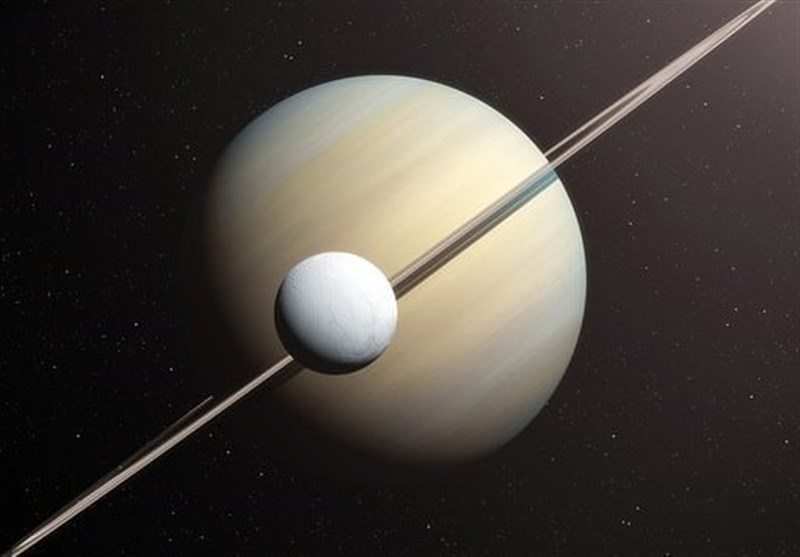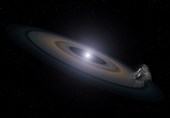Scientists Reveal How Saturn's Moon Got Its 'Tiger Stripes'
TEHRAN (Tasnim) - Scientists have developed an explanation for one of the most striking features of Enceladus, an ocean world that has the right ingredients for life.
Slashed across the south pole of Saturn's sixth-largest moon is a series of 'tiger stripes' that have baffled scientists for over 15 years.
Researchers have developed a new model to investigate the physical forces acting on Enceladus that allow the fissures to form and remain in place.
The team found the reason the slashes are concentrated on the south pole is simply because this area happened to split open first, the Daily Mail reported.
It was also discovered that fissures stay open and erupting as a result of the tidal effects of Saturn's gravity.
The moon's deformation acts to keep the wound from healing—repeatedly widening and narrowing the cracks and flushing water in and out of them—preventing the ice from closing up again.
Doug Hemingway, lead author and researcher at Carnegie Science, said: "First seen by the Cassini mission to Saturn, these stripes are like nothing else known in our Solar System.
"They are parallel and evenly spaced, about 130 kilometers (80 miles) long and 35 kilometers (21 miles) apart.
"What makes them especially interesting is that they are continually erupting with water ice, even as we speak. No other icy planets or moons have anything quite like them."
The team was particularly interesting in understanding why the stripes were concentrated only on the moon's south pole and how the cracks became so evenly spaced.
It was determined that the south pole happened to split open first, is how it got its stripes.
Enceladus experiences internal heating due to the eccentricity of its orbit.
The moon is slightly deformed due to its constant shift in distance to Saturn, which also keeps it from completely freezing.
The formation on the poles, according to the model, is a result of the gravitationally induced deformation, so the ice sheet it thinnest in these areas.
Because water expands as it freezes, as the icy crust thickens from below, the pressure in the underlying ocean increases until the ice shell eventually splits open, creating a fissure.
Because of their comparatively thin ice, the poles are the most susceptible to cracks.
The researchers believe the fissure named after the city of Baghdad was the first to form -the stripes are named after places referred to in the stories of One Thousand and One Nights.
However, it didn't just freeze back up again. It stayed open, allowing ocean water to spew from its crevasse that, in turn, caused three more parallel cracks to form.
Co-author Max Rudolph of the University of California said: "Our model explains the regular spacing of the cracks," the study's co-author, Max Rudolph, added.
He also pointed out that the weight of the icy material that falls back "caused the ice sheet to flex just enough to set off a parallel crack about 35 kilometers (21 miles) away."
The additional splits formed from the weight of ice and snow building up along the edges of the Baghdad fissure as jets of water from the subsurface ocean froze and fell back down.
This weight added a new form of pressure on the ice sheet.
That the fissures stay open and erupting is also due to the tidal effects of Saturn's gravity.
The moon's deformation acts to keep the wound from healing—repeatedly widening and narrowing the cracks and flushing water in and out of them—preventing the ice from closing up again.
For a larger moon, its own gravity would be stronger and prevent the additional fractures from opening all the way.
So, these stripes could only have formed on Enceladus.
"Since it is thanks to these fissures that we have been able to sample and study Enceladus' subsurface ocean, which is beloved by astrobiologists, we thought it was important to understand the forces that formed and sustained them," Hemingway said.
"Our modeling of the physical effects experienced by the moon's icy shell points to a potentially unique sequence of events and processes that could allow for these distinctive stripes to exist."






